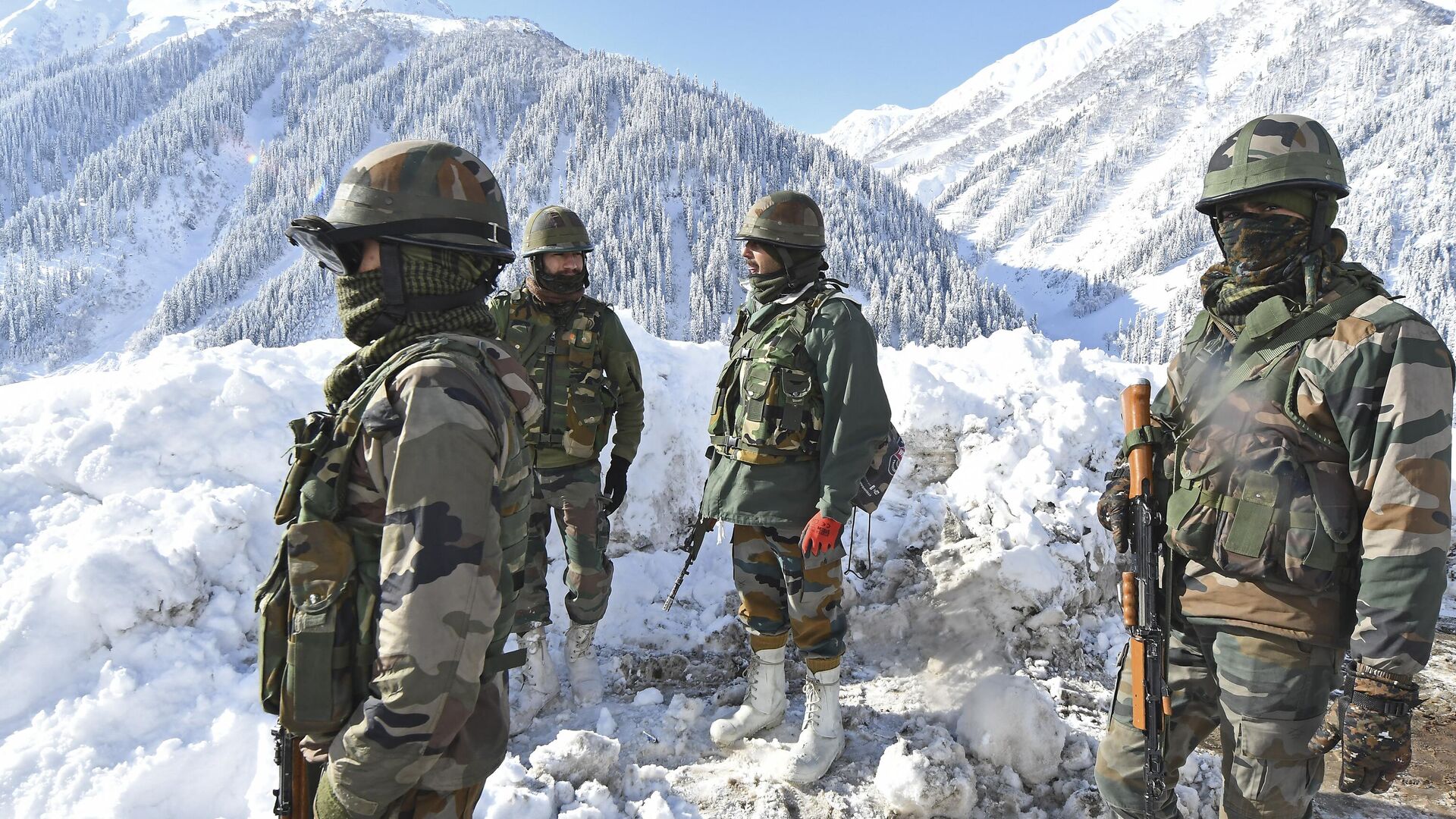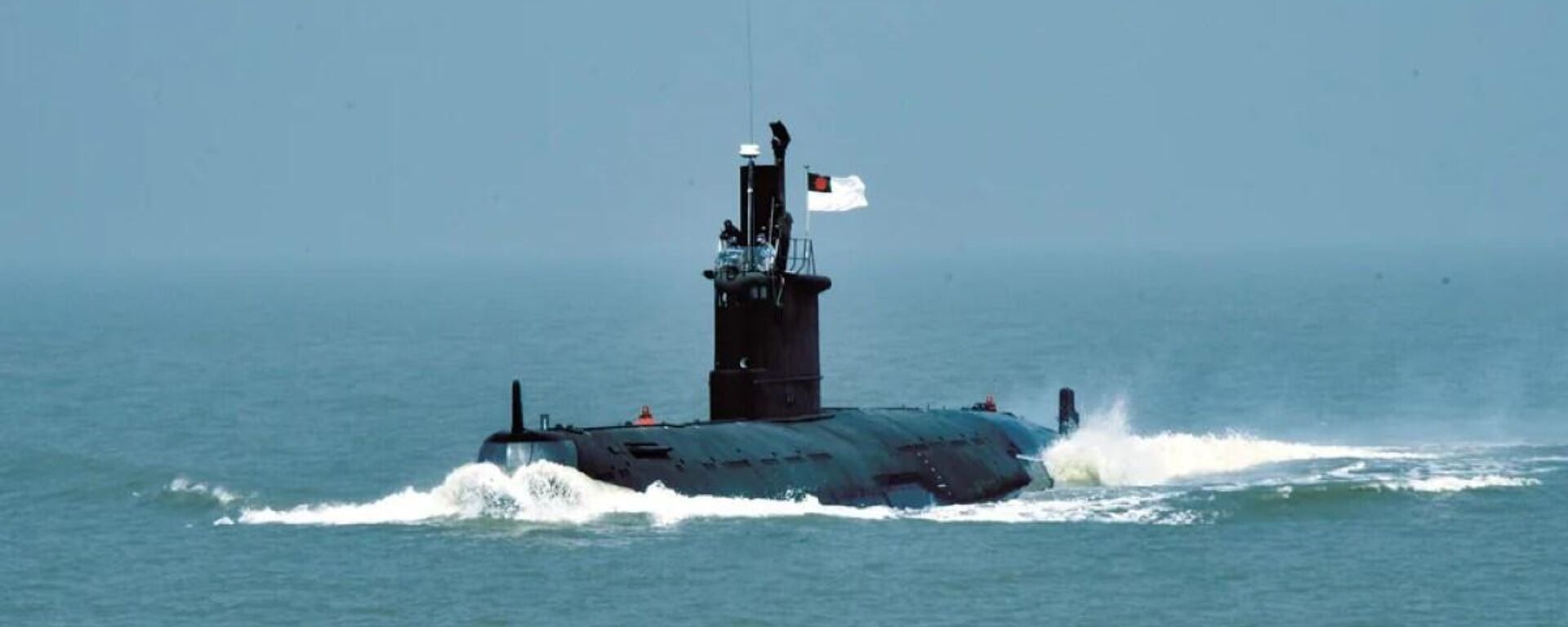https://sputniknews.in/20230403/vintage-equipment-is-complex-challenge-for-indian-forces-army-veterans-1408042.html
Vintage Equipment is Complex Challenge for Indian Forces: Army Veterans
Vintage Equipment is Complex Challenge for Indian Forces: Army Veterans
Sputnik India
As per a recent statement by the Indian Army chief Manoj Pande, 47 percent of the force's equipment was classified as "vintage".
2023-04-03T18:19+0530
2023-04-03T18:19+0530
2023-04-03T18:28+0530
sputnik opinion
indian army
defense export
defense budget
india
indigenization
make in india
https://cdn1.img.sputniknews.in/img/07e7/03/11/1206743_0:160:3073:1888_1920x0_80_0_0_a158c3053331e8643e5022f570f55964.jpg
Aging equipment in the Indian Army has led to increased challenges for the force and there is an urgent need to modernize it, two veterans told Sputnik on Monday.According to Major General (Retd.) Shashi Bhushan Asthana, for any defense force in the world, the ideal ratio should be 30% state-of-the-art equipment, 40% current equipment, and 30% obsolete, or vintage, equipment."But there are hardly any defense forces in the world who have the ideal ratio. Why I say this is ideal is because you can't change the entire inventory in one day. So obviously, this 30% is for upcoming changes," he said.Vintage Equipment Doesn't Mean It's Not ServiceableAsthana explained to Sputnik that of the total, 40% is serviceable equipment: when one says it is vintage equipment, it does not mean it is not serviceable. That's why there is a need to draw a line between these two types of equipment.However, he assured that even with the current equipment profile, the Indian Army is capable of taking on present challenges."But you need modernization because your adversaries are also modernizing. So for taking on future challenges, you need to modernize. That's why you have to shed off the vintage equipment and get state-of-the-art equipment," he explained.To get state-of-the-art equipment, there are two routes. One route is direct procurement and the second is the Atmanirbhar Bharat scheme, under which the Indian Armed Forces manufacture their own arms and ammunition.Indigenising Defence ProductionThe Indian Army is going ahead with a fair amount of manufacturing, putting the expertise of private players as well as R&D facilities of the government together, in its bid to build indigenous defense products."We are also looking at collaboration and the highest priority that has been given is IDDM (Indigenously Designed, Developed, and Manufactured) equipment," Asthana, a veteran of the 1999 India-Pakistan Kargil War, revealed.Former Indian Army officer Major General Dr. Ashok Kumar shared with Sputnik that it was natural for the armed forces of a country to have three kinds of equipment in them:Kumar pointed out that the challenges related to vintage equipment are not that severe if it is indigenous. In the case of indigenous equipment, assembly lines and associated infrastructure is available to support it despite its reduced effectiveness.He reckoned that being of import origin, the supply lines, including for spare parts, are no longer available. It is also not possible to open assembly lines for it in the country and maintain this kind of equipment on their own.Invariably, it will involve the transfer of technology and the creation of appropriate infrastructure to have the assembly lines in the country.
https://sputniknews.in/20230320/bangladesh-unveils-maiden-submarine-base-built-with-chinese-assistance-1229706.html
https://sputniknews.in/20230331/modi-hails-indigenous-push-as-defense-ministry-inks-34-bln-deals-1381455.html
india
Sputnik India
feedback.hindi@sputniknews.com
+74956456601
MIA „Rossiya Segodnya“
2023
Pawan Atri
https://cdn1.img.sputniknews.in/img/07e6/0c/13/139630_147:0:831:684_100x100_80_0_0_8fa2b25903e7787fe6a2698552c167df.png
Pawan Atri
https://cdn1.img.sputniknews.in/img/07e6/0c/13/139630_147:0:831:684_100x100_80_0_0_8fa2b25903e7787fe6a2698552c167df.png
News
en_IN
Sputnik India
feedback.hindi@sputniknews.com
+74956456601
MIA „Rossiya Segodnya“
Sputnik India
feedback.hindi@sputniknews.com
+74956456601
MIA „Rossiya Segodnya“
Pawan Atri
https://cdn1.img.sputniknews.in/img/07e6/0c/13/139630_147:0:831:684_100x100_80_0_0_8fa2b25903e7787fe6a2698552c167df.png
vintage equipment indian army, vintage equipment indian armed forces, indian army chief vintage equipment, vintage equipment in indian army, indian army obsolete equipment, indian army obsolete ammunition, indian army vintage weapons, indian army vintage arms,
vintage equipment indian army, vintage equipment indian armed forces, indian army chief vintage equipment, vintage equipment in indian army, indian army obsolete equipment, indian army obsolete ammunition, indian army vintage weapons, indian army vintage arms,
Vintage Equipment is Complex Challenge for Indian Forces: Army Veterans
18:19 03.04.2023 (Updated: 18:28 03.04.2023) As per a recent statement by Indian Army chief General Manoj Pande, 47% of the armed service’s equipment is classified as "vintage."
Aging equipment in the Indian Army has led to increased challenges for the force and there is an urgent need to modernize it, two veterans told Sputnik on Monday.
According to Major General (Retd.) Shashi Bhushan Asthana, for any defense force in the world, the ideal ratio should be 30% state-of-the-art equipment, 40% current equipment, and 30% obsolete, or vintage, equipment.
"But there are hardly any defense forces in the world who have the ideal ratio. Why I say this is ideal is because you can't change the entire inventory in one day. So obviously, this 30% is for upcoming changes," he said.
Vintage Equipment Doesn't Mean It's Not Serviceable
Asthana explained to Sputnik that of the total, 40% is serviceable equipment: when one says it is vintage equipment, it does not mean it is not serviceable. That's why there is a need to draw a line between these two types of equipment.
"When Army chief Manoj Pande says vintage equipment, he means that there is modern generation equipment of that type which is available in the global market but is not with us. So, therefore, there is an urgent need for modernization," the former Indian Army officer elaborated.
However, he assured that even with the current equipment profile, the Indian Army is capable of taking on present challenges.
"But you need modernization because your adversaries are also modernizing. So for taking on future challenges, you need to modernize. That's why you have to shed off the vintage equipment and get state-of-the-art equipment," he explained.
To get state-of-the-art equipment, there are two routes. One route is direct procurement and the second is the Atmanirbhar Bharat scheme, under which the Indian Armed Forces manufacture their own arms and ammunition.
Indigenising Defence Production
The Indian Army is going ahead with a fair amount of manufacturing, putting the expertise of private players as well as R&D facilities of the government together, in its bid to build indigenous defense products.
"We are also looking at collaboration and the highest priority that has been given is IDDM (Indigenously Designed, Developed, and Manufactured) equipment," Asthana, a veteran of the 1999 India-Pakistan Kargil War, revealed.
Former Indian Army officer Major General Dr. Ashok Kumar shared with Sputnik that it was natural for the armed forces of a country to have three kinds of equipment in them:
2.
current equipment with changing technology, but not fully operationalized;
3.
legacy, or vintage, equipment.
Kumar pointed out that the challenges related to vintage equipment are not that severe if it is indigenous. In the case of indigenous equipment, assembly lines and associated infrastructure is available to support it despite its reduced effectiveness.
"However, in the case of India, close to 80% of the equipment, especially with the Army, is of import origin from different countries and the majority being from Russia. In such a situation, the vintage equipment places more complex challenges," Kumar stated in an interaction with Sputnik.
He reckoned that being of import origin, the supply lines, including for spare parts, are no longer available. It is also not possible to open assembly lines for it in the country and maintain this kind of equipment on their own.
Invariably, it will involve the transfer of technology and the creation of appropriate infrastructure to have the assembly lines in the country.
"Therefore, Indian Army's equipment being vintage becomes more challenging because of its import-content being on the higher side. If the import content can be reduced and the indigenous content is increased, the challenge will definitely be reduced," Dr. Kumar concluded.




